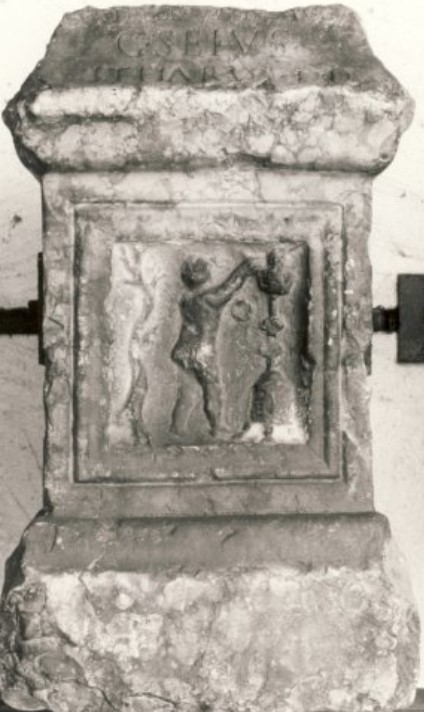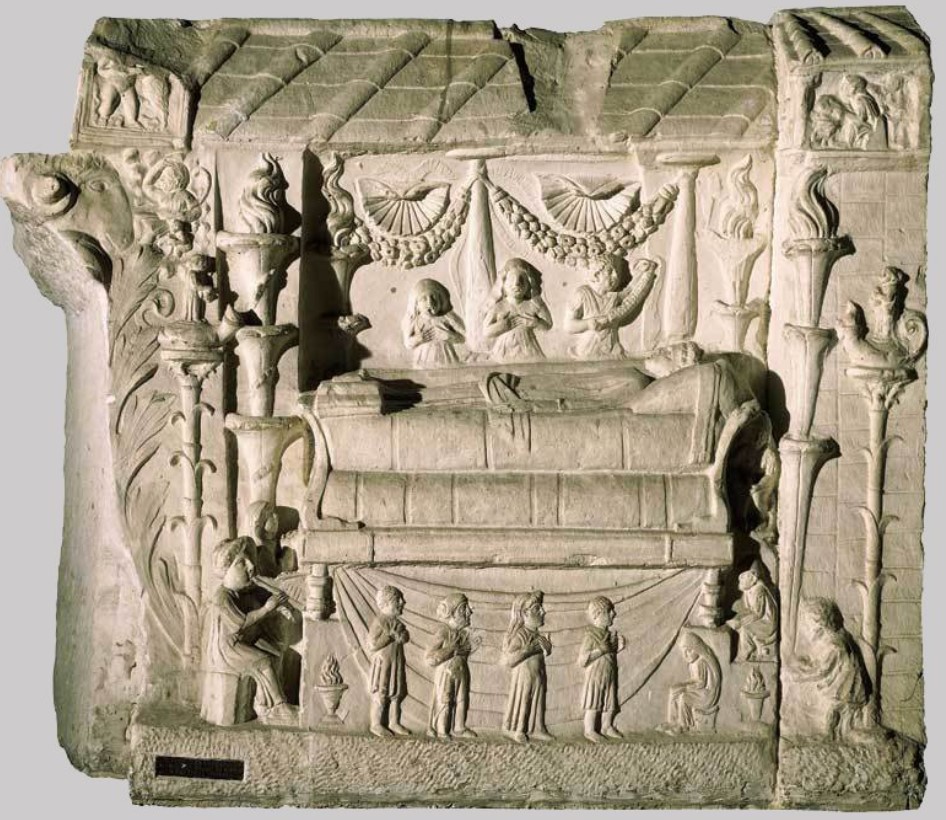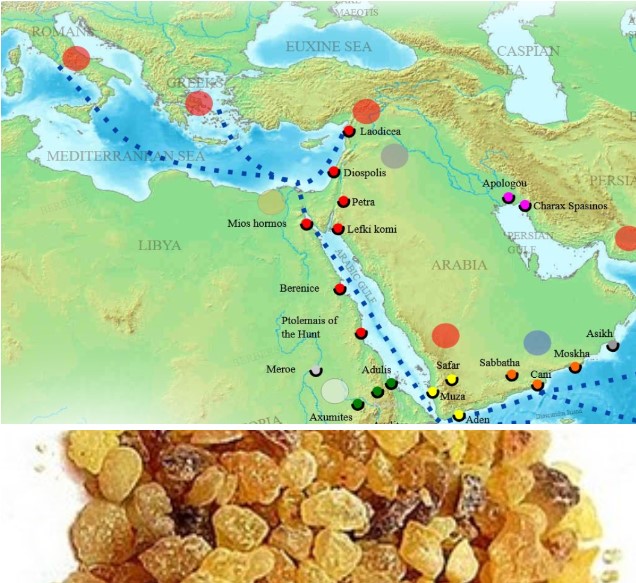Acerra, Incense Box of Ancient Sacrifices
The term acerra or acerna likely derives from the Latin word acer (maple tree). Virgil and Ovid describe acerra as a square-shaped box used to store incense during sacrifices, particularly during festivals and funerals.
During ceremonies, the acerra was carried by a young assistant (camillus), who handed it to the priest to take grains of incense and scatter them on the flames. This practice gave rise to the expression de acerra libare (to offer incense from the box, turibulum.)

Two scenes of acerra depiction on Ara Pacis relief
A young assistant holding an acerra beside sacrificial tools. Ara Pacis, camillus, quindecemviri(?) holding acerra (box) with tripod, north procession.
Ara Pacis Augustae (Altar of Augustan Peace). July 4, 13 BCE. the Roman Senate votes (in a constitutio) to honor the triumphal return of Augustus from Gaul and Hispania (France and Spain). January 30, 9 BCE. monument is dedicated. Marble - Ara Pacis Museum, Rome.
Like all vessels employed in sacrificial rites, it held significance in Roman art and is usually depicted being carried by officiating priests during religious ceremonies in many bas-reliefs. A servant would hold the acerra in the left hand while using the right hand to sprinkle incense onto the altar's flames, hence the expression libare acerra.

Sacred arula (altar) with an offering scene and inscription which the client Caius Seius Itharus dedicated to Minerva Augusta in the 1st century CE. Augusta, Maffeiano Museum, Verona, Italy.
Minervae Aug(ustae) / G(aius) (!) Seius / Itharus d(onum) d(edit)
The front surface of the nut is framed by a contour groove and moulded strip with reverse throat. Inside in relief is a scene of bucolic landscape (on the left a tree) where a cupid performs a sacrifice holding in his left hand a crown of leaves and placing with his right an object on an incense burner (acerra) placed on the right side. Trianguliform interpunching with vertex downwards.
Sextus Pompeius Festus (late 2nd century CE), a Roman grammarian, wrote that, in Republican Rome, the acerra could also signify a portable altar (ara turicrema), where incense was burned before the bier of the deceased in a collocatio (the deceased's displayed body).

Collocatio relief from Tomb of the Haterii- Vatican Museum, Rome
A funerary scene with a deceased figure on a bed surrounded by lit candelabra, mourners, and servants.
The tomb of the Haterii was a monumental Roman one built at the beginning of the 2nd century on the via Labicana (via Casilina) in Rome. It belonged to the family of Quintus Aterius Thychicus, a public works contractor (redemptor) under Domitian.
The relief depicts the funeral scene exposed to view (collocatio) of a woman deceased lying on a bed surrounded by four candelabras with flames lit. Around the bed are two prefaces that accompany her with a crown, a flute player and small figures of servants or characters in prayer.
The Twelve Tables of Roman law restricted the use of the acerra, viewing it as an unnecessary luxury. Despite this, the vessel persisted in Roman and later Christian liturgical traditions. Over time, its design evolved into cylindrical forms (pissides or thymiateria) used in churches. The Christian Church incorporated incense as a symbol of sanctity and divine presence from the 1st century CE.
Incense and Its Significance
Today, spices evoke food seasonings, but in antiquity, they held a broader meaning: ingredients for ointments, scented powders, cosmetics, incense, and medicinal drugs.
- Aromata: Perfumes such as thumiamata (aromatic oils) and incense.
- Condimenta: Preservative substances, including those for embalming.
- Theriaca: Substances for creating antidotes to poisons.
Spices were highly valued by ancient civilizations for use in homes, temples, and public ceremonies. They were considered luxury items, akin to precious stones and silk. Their rarity stemmed from their growth in distant regions with unique climates. Transplanting these plants elsewhere was rarely successful, necessitating transport by land, sea, or desert caravan routes.

Roman-era acerra, Civic Archaeological Museum, Padria (Sassari), Italy. Over time, its design evolved into cylindrical forms (pissides or thymiateria) used in churches.
The Incense Trade
Pliny noted that incense came from Arabia Felix, the southern Arabian Peninsula. Eratosthenes of Cyrene (died around 195 BCE) described the region as fertile and rich in wildlife, inhabited by four peoples — the Minaeans, Sabaeans, Qatabanis, and Hadramautians — each with its own capital.
A century earlier, Strabo (60 BCE–20 CE) accompanied Aelius Gallus, Egypt's prefect, on a campaign against southern Arabia in 24 BCE. Strabo wrote about the Sabaean land's wealth and incense production, extracted by cutting the bark of trees. The substance was expensive because it did not grow elsewhere. Strabo also described the caravan-based "relay trade," where neighboring tribes continuously transferred aromatic goods until they reached Syria and Mesopotamia.

The Incense Trade (1st century CE).
Roman Efforts to Control the Trade
In the 1st century BCE, Gaius Caesar, Augustus's nephew and heir, was sent to the East. Pliny, in his twelfth book, mentions that Gaius Caesar was the first Roman to gather information about the incense tree and relay it to Juba, king of Mauretania. Gaius likely visited Hadramaut, possibly burning Aden’s warehouses to disrupt its monopoly on Arabian trade. He built large ships for spice trade with India, establishing direct routes from Egypt to India, bypassing southern Arabia.

Terracotta censer (30 BCE – 395 CE) resembling a Roman military camp (castrum) - Egyptian Museum, Turin
Southern Arabia controlled the Red Sea corridor and the Incense Route, monopolizing trade from the East and Africa for centuries. Trade routes were numerous and varied: some were maritime, others mixed land-sea routes, and some entirely overland, relying on rivers and oases for water. Land transport relied on camels, Arabian dromedaries, horses, mules, elephants, donkeys, and human porters.
The Incense Route as Cultural Heritage
The Incense Route connected Arabia Felix to Rome, facilitating cultural and religious exchanges. The resin, known as incensum (Latin), is dried gum extracted from trees thriving in specific conditions: limestone soil, desert climates, and trade winds. Harvesting the resin is entirely manual and spans several months. Larger resin pieces emit the finest fragrance and retain the most essential oils, earning the nickname white gold.
Adoration of the Magi. Panel from a Roman sarcophagus, 300-330 CE. From the cemetary of St. Agnes in Rome - Vatican Museums, Rome, Italy
Depicts the Magi offering gifts to the infant Jesus held in his mother, Mary. Represented in the number of three, as the gifts they carry (gold, incense and myrrh), they are accompanied by dromedaries with which they have traveled the caravan routes that from the East lead to Jerusalem.
Historical Use and Legacy
Three thousand five hundred years ago, various peoples recognized the resin's health benefits. Its smoke disinfected air, and ointments containing incense were used for joints and skin. Persian physician Avicenna recommended its internal use. Pharaohs burned incense during rituals, and in Roman times, it was as valuable as gold. It served as a sacrificial offering, connecting the earthly and sacred realms, and was prized for its fragrance among the imperial court and aristocracy.
By the mid-1st century CE, the Church incorporated incense into its rituals, maintaining its use from 1570 as a symbol of solemnity, representing Christ's presence.

Etruscan bronze incense cart zoomorphic design (9th century BCE) from Monterozzi necropolis, Arcatelle - National Museum of Tarquinia, Italy.
Today, incense comes from southern Arabia, Oman, the Horn of Africa, or India. The UNESCO-recognized Spices Road stands as a testament to its historical and cultural significance. From its sacred role in ancient sacrifices to its continued use in religious practices, the acerra remains a symbol of devotion and artistry.
Last update: November 26, 2024
Go to definitions: A | B | C | D | E | F | G | H | I | J | K | L | M | N | O | P | Q | R | S | T | U | V | W | X | Y | Z
 DONATE
DONATE 
See also: